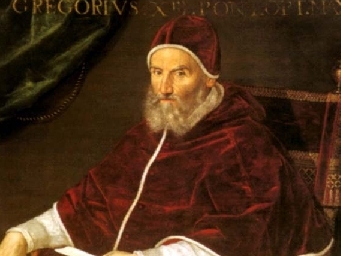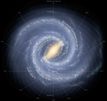How the date for Easter is calculated
So, When is Easter?
 © Public Domain |
This is a portrait of Pope Gregory XIII, who in 1582 decreed that a new calendar be used. The Gregorian calendar, which over the centuries has replaced most other calendars, was based on a reform of the way the date of Easter was calculated.
In early Christianity, different parishes would celebrate Easter on different days. In 325, the Council of Nicaea therefore fixed the procedure for determining the date of Easter Sunday. Easter Sunday would henceforth fall on the first Sunday after the first full Moon of spring (in the northern hemisphere).
1582 was actually ten days short of a full year.
To ensure that the first day of spring, which had been set to 21 March by the Council of Nicaea, would actually coincide with the equinox again, Pope Gregory XIII ordered the advancement of the calendar by ten days in 1582. In some Roman Catholic countries, Thursday, October 4, 1582 was therefore directly followed by Friday, October 15, 1582.Determining the date of Easter is still very complicated, however, as like its predecessors, the Gregorian calendar is based on the solar year of 365 days whereas Easter is defined in relation to the (full) Moon. A large number of medieval mathematicians worked on calculating the date of Easter. Today, we use the slightly modified formula developed in 1800 by mathematician and astronomer Carl Friedrich Gauss to calculate the calendar date.
According to this formula, Easter falls on a Sunday between March 22 and April 25. This year, the Easter Bunny will be hiding the eggs on April 12.
German Aerospace Center
How the date for Easter is calculated
So, When is Easter?
 © Public Domain |
This is a portrait of Pope Gregory XIII, who in 1582 decreed that a new calendar be used. The Gregorian calendar, which over the centuries has replaced most other calendars, was based on a reform of the way the date of Easter was calculated.
In early Christianity, different parishes would celebrate Easter on different days. In 325, the Council of Nicaea therefore fixed the procedure for determining the date of Easter Sunday. Easter Sunday would henceforth fall on the first Sunday after the first full Moon of spring (in the northern hemisphere).
1582 was actually ten days short of a full year.
To ensure that the first day of spring, which had been set to 21 March by the Council of Nicaea, would actually coincide with the equinox again, Pope Gregory XIII ordered the advancement of the calendar by ten days in 1582. In some Roman Catholic countries, Thursday, October 4, 1582 was therefore directly followed by Friday, October 15, 1582.Determining the date of Easter is still very complicated, however, as like its predecessors, the Gregorian calendar is based on the solar year of 365 days whereas Easter is defined in relation to the (full) Moon. A large number of medieval mathematicians worked on calculating the date of Easter. Today, we use the slightly modified formula developed in 1800 by mathematician and astronomer Carl Friedrich Gauss to calculate the calendar date.
According to this formula, Easter falls on a Sunday between March 22 and April 25. This year, the Easter Bunny will be hiding the eggs on April 12.
German Aerospace Center







